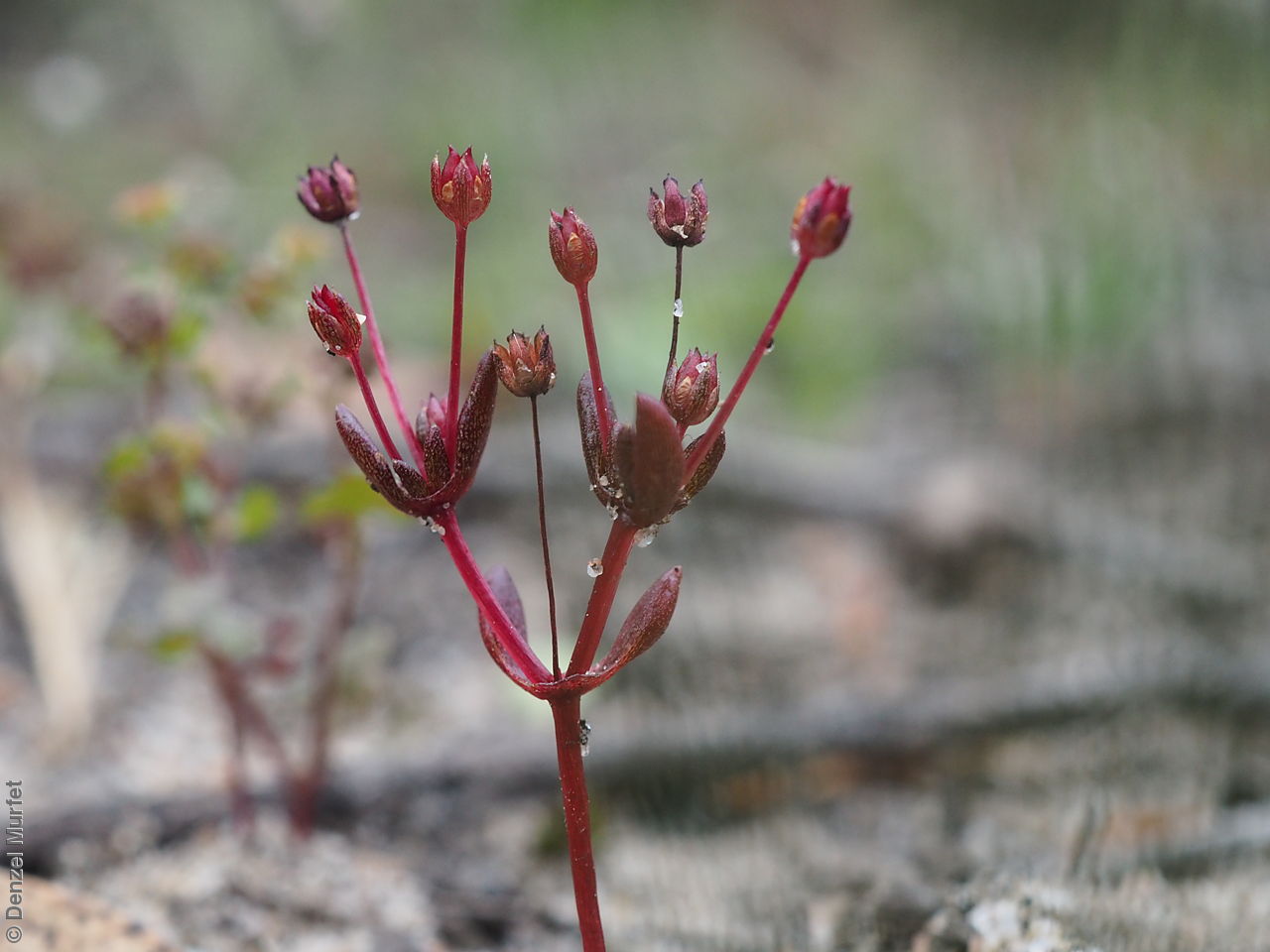










Botanical art
Prior names
Tillaea pedicellosa
Tillaea macrantha var. pedicellosa
Tillaea closiana
Crassula pedicellosa
Common names
Red Crassula
Stalked Crassula
Etymology
Crassula the diminutive of the Latin 'crassus' meaning thick, alluding to the thickening of the succulent leaves. Closiana possibly named after Dominique Clos (1821 - 1908), who was a French physician and botanist.
Distribution and status
Found in southern South Australia, growing on poor clay and sandy soils in winter-wet areas. Also found in Western Australia, Victoria and Tasmania. Native. Common in South Australia. Common in the other States.
Herbarium regions: Eyre Peninsula, Northern Lofty, Yorke Peninsula, Southern Lofty, Kangaroo Island, South Eastern, Green Adelaide
NRM regions: Adelaide and Mount Lofty Ranges, Eyre Peninsula, Kangaroo Island, Northern and Yorke, South East
AVH map: SA distribution map (external link)
Plant description
Annual herb with erect, smooth, usually wiry branches rarely to 10 cm high. Leaves oblanceolate, rarely elliptic to 10 mm long and 3.5 mm wide, obtuse or rounded, rarely acute, flat or slightly convex above and somewhat convex below. Flowers white-cream with red tinge along stems. Flowering between August and October. Fruits are small red-brown capsules in clusters along the stems. Seeds are orange-brown short oblong seed to 0.6 mm long and 0.2 mm wide, with a tuberculate surface.
Seed collection and propagation
Collect seeds between October and December. Collect whole plants that are drying off, turning red-brown with mature fruit-spikes. These will contain very small brown seeds when rubbed with your fingers. Place the plants in a tray and leave to dry for two weeks. Then rub the plants gently by hand or with a rubber bung to dislodge the seeds. Use a sieve to separate the unwanted material. Be very careful as the seeds are very small. Store the seeds with a desiccant such as dried silica beads or dry rice, in an air tight container in a cool and dry place. Seed viability is usually high.
| Location | No. of seeds (weight grams) | Number of plants | Date collected | Collection number Collection location | Date stored | % Viability | Storage temperature |
|---|---|---|---|---|---|---|---|
| MSB | 72,000 (0.72 g) | 100+ | 30-Aug-2007 | MJT72 Eyre Peninsula | 100% | ||
| BGA MSB | 146,000 (3.87 g) 146,000 (3.87 g) | 50 | 1-Oct-2007 | RJB74636 Southern Lofty | 19-Sep-2008 | 85% | -18°C |
| BGA | 10,000 (0.1 g) | 50 | 23-Oct-2007 | RJB75121 Southern Lofty | 19-Sep-2008 | 95% | -18°C |
Number of plants: This is the number of plants from which the seeds were collected.
Collection location: The Herbarium of South Australia's region name.
% Viability: Percentage of filled healthy seeds determined by a cut test or x-ray.